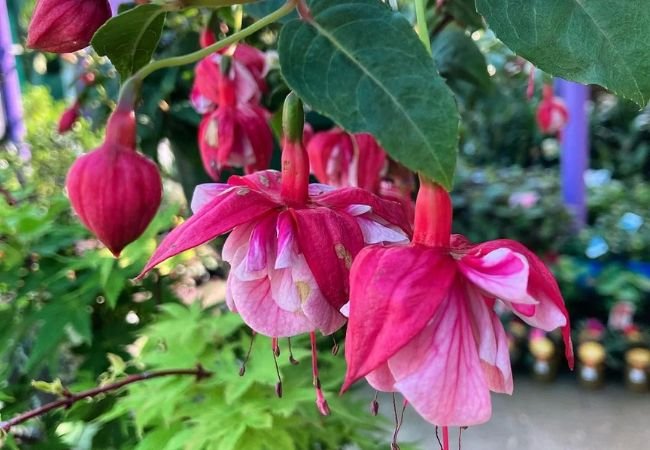Unlock the secrets to cultivating vibrant and fragrant carnation in your garden. This comprehensive guide covers everything from selecting the right varieties and preparing the soil to caring for your carnation plants through proper watering, fertilizing and pest control strategies. Learn expert tips and tricks to ensure a bountiful bloom season and enjoy these beloved flowers for years to come.
Carnation are a beloved flowering plant that has been captivating gardeners for centuries with their delightful fragrance, vibrant colors, and long-lasting blooms. Whether you’re a seasoned green thumb or just starting your gardening journey, growing carnations can be an incredibly rewarding experience. In this ultimate guide, we’ll explore everything you need to know to cultivate these beautiful flowers successfully, from choosing the right varieties to providing the perfect growing conditions.
Here’s a detailed information chart for Carnations:
| Aspect | Details |
|---|---|
| Botanical Name | Dianthus caryophyllus |
| Common Names | Carnation, Clove Pink |
| Plant Type | Perennial (often grown as annual) |
| Zones | USDA Zones 6-9 |
| Exposure | Full sun |
| Bloom Time | Late spring to summer |
| Height/Spread | 1-3 feet tall, 1-2 feet wide |
Selecting the Right Carnation Varieties

Before you begin your carnation-growing adventure, it’s essential to choose varieties that suit your climate and preferences. Here are some popular options to consider:
Standard Carnations
These classic varieties produce large, double blooms on sturdy stems, making them perfect for cutting gardens and bouquets.
Spray Carnations
With their smaller, clustered blooms and compact growth habit, spray carnations are ideal for border plantings and container gardens.
Perpetual Flowering Carnations
As the name suggests, these varieties bloom continuously throughout the growing season, providing a constant supply of fresh flowers.
Dwarf Carnations
Ideal for small spaces or rock gardens, dwarf carnations are miniature versions of their larger counterparts, often reaching only 6-12 inches in height.
Preparing the Soil and Planting
Carnations thrive in well-draining, nutrient-rich soil with a slightly alkaline pH ranging from 6.5 to 7.5. Before planting, amend your garden bed with compost or well-rotted manure to improve soil quality and drainage. Plant your carnations in full sun exposure, spacing them 12-18 inches apart to allow for adequate air circulation and growth.
Watering and Fertilizing
Proper watering and fertilization are crucial for the healthy growth and abundant blooms of your carnation plants. Here are some tips to keep in mind:
Watering
Carnations prefer consistently moist but well-draining soil. Water deeply, avoiding shallow sprinkles that can lead to fungal diseases. Aim to keep the soil evenly moist but never waterlogged.
Fertilizing
Feed your carnations with a balanced, water-soluble fertilizer every 2-4 weeks during the growing season. Avoid over-fertilizing, as this can lead to excessive foliage growth at the expense of flower production.
Pruning and Deadheading
Regular pruning and deadheading (removing spent blooms) are essential for promoting continuous flowering and maintaining a tidy appearance in your carnation garden.
Pruning
In early spring, prune back any dead or damaged stems, shaping the plant to encourage bushy growth and better air circulation.
Deadheading
Remove spent flowers by snipping them off with clean pruners just below the flower head. This helps redirect the plant’s energy into producing new blooms.
Pest and Disease Management
While carnations are generally hardy plants, they can be susceptible to certain pests and diseases. Here are some common issues to watch out for and how to address them:
Aphids
These small, sap-sucking insects can be controlled by spraying with insecticidal soap or introducing beneficial insects like ladybugs to your garden.
Fungal Diseases
Conditions like leaf spot, rust, and wilt can be mitigated by ensuring proper air circulation, avoiding overhead watering and using fungicides if necessary.
Root Rot
Overwatering and poor drainage can lead to root rot, which can be prevented by amending your soil and adjusting your watering schedule.
Winter Protection
In colder climates, carnations may require some extra protection during the winter months. Here are a few tips:
Mulching
Apply a 2-4 inch layer of mulch around the base of your plants to insulate the roots and protect them from freezing temperatures.
Cold Frames or Cloches
For extra protection, consider covering your carnation plants with cold frames or cloches during periods of extreme cold.
Overwintering Indoors
In very cold regions, you may need to dig up your carnation plants and overwinter them in a cool, well-ventilated area like a basement or garage.
Growing carnations can be a delightful and rewarding experience for gardeners of all skill levels. By following the tips outlined in this ultimate guide, you’ll be well-equipped to cultivate a vibrant and fragrant carnation garden that will be the envy of your neighborhood. From selecting the right varieties and preparing the soil to mastering watering, fertilizing and pest management techniques, these steps will ensure your carnations thrive and bring you joy with their stunning blooms for years to come.











[…] Carnations are classic flowers with ruffled petals. They come in many colors and have a spicy, clove-like scent. These flowers last a long time after being cut. […]